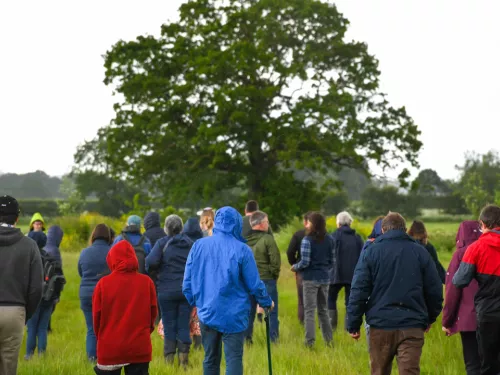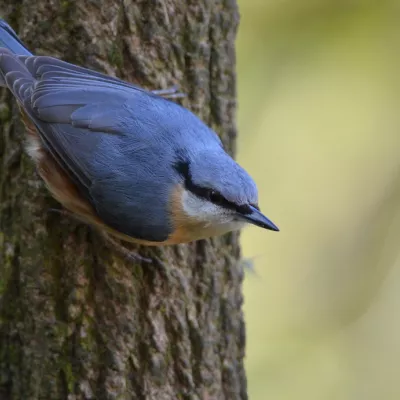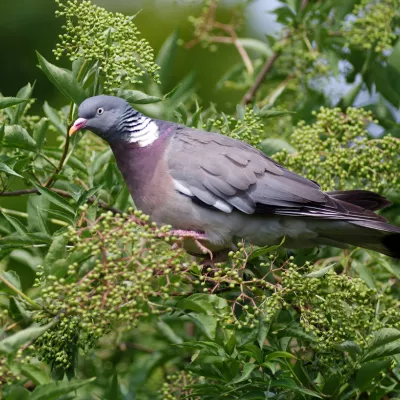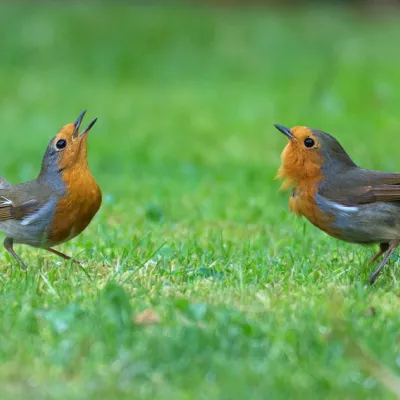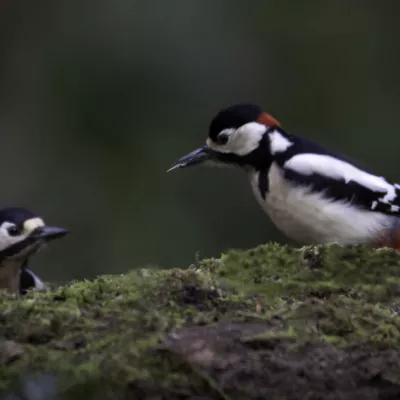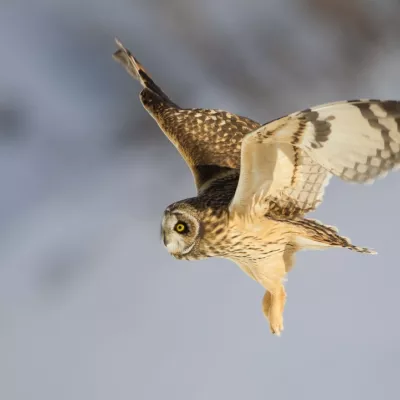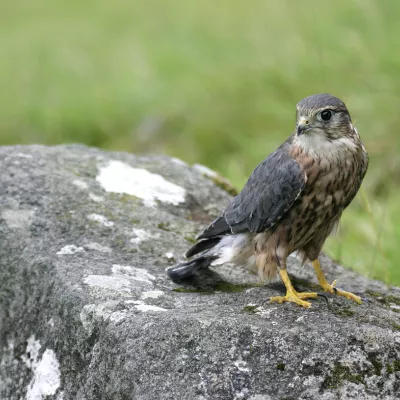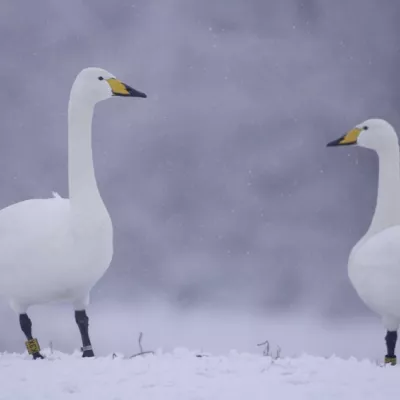Here are a few:
Merlin – coasts. Our smallest raptor, the resident merlin numbers in the UK are boosted in winter by visitors from Iceland.
Short-eared owl – marshes and grasslands. Spot this yellow-eyed owl hunting silently at dusk, with populations increased in winter by visits from Scandinavia and Russia.
Whooper swan – lochs and lakes. Over from Iceland, this recognisable large white birds weighs up to 15kg!
Siskin – rural gardens, parks, and woodlands. Your chances of seeing a bright yellow siskin are up in winter when populations migrate from Scandinavia.
Turnstone – coasts, saltmarshes, mudflats. Turnstones - brown and white speckled waders - arrive from Canada and Greenland to the warmer UK climate.
On the topic of coastal overwintering birds, it’s a good idea to be extra cautious of disturbance. Dogs, for example, can cause serious anxiety to these birds in need of a winter home. You can learn more about bird disturbance at our coastal reserves here and learn about our opposition to National Grid’s Sea Link plans for this reason.
Increase your chances of spotting birds at home
Fancy giving birdwatching a go from home? We don’t blame you! If you’ve got a garden and garden-facing window, there’s plenty you can do to increase your chances of spotting them.
For one, avoid the temptation to cut back hedges. These can be crucial habitats for birds in the winter, and it follows that you’re more likely to see them if they have a home!
Maintain and carefully place ‘feed stations’
First, put out some feeding stations. You can do this in several ways, and you can choose to do a few of them or just one:
Place feeders at a good distance from your home so that any visiting birds aren’t frightened off by noise or activity. But of course, you’ll want to try to get a clear line of sight from your birdwatching window! You’ll also want to keep them clear of any shrubs from which cats could pounce on them.
It’s also important to keep feeders clean throughout the year to prevent the spread of disease, and only put out the feed that’s needed so you don’t attract unwanted guests.
Use healthy, nutritious bird food
If you can, provide birds with a variety of food types, like:
Reporting what you see
Your birdwatching activities can also contribute to important citizen science and survey projects like the Big Garden Birdwatch (26th-28th January). The RSPB uses the data collected about the species and numbers of birds spotted to understand the state of the UK’s bird population – including important insight into which birds could be in need of more help. Simply submit what you see to the RSPB.
Or, if you’re spotting outside of the Big Garden Birdwatch, you could submit an interesting sighting to the British Trust for Ornithology or record any and all spots to an app like eBird.
Happy birdwatching!
Above all else, we hope you have fun birdwatching – whenever and wherever you do it, and whatever you spot. It’s a lovely activity and frequent spotters will often tell you just how good it is for their wellbeing.
So, get out there (or onto a seat by the window in the warm...) and enjoy.
If you’re after some high-quality feeders and bird food, be sure to check out our range of Gardening and Wildlife products.
